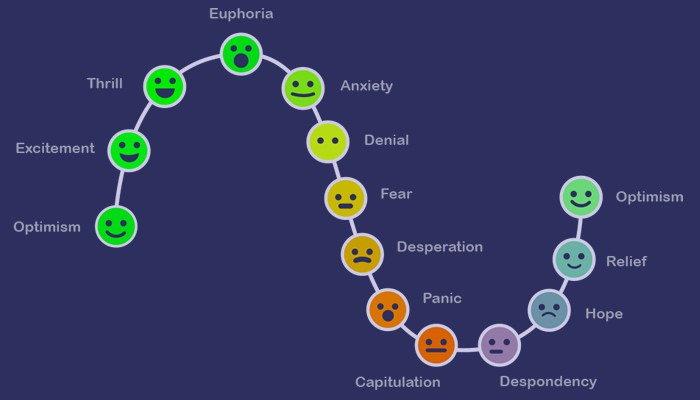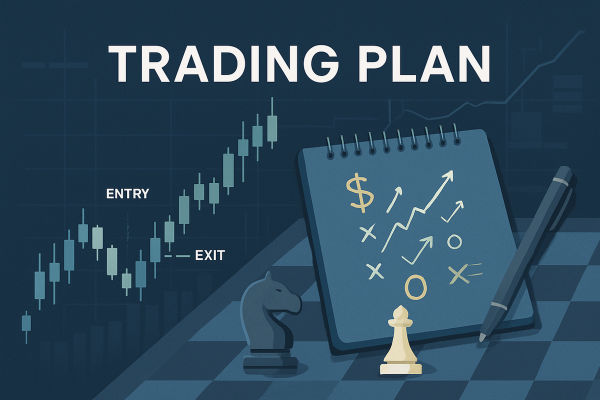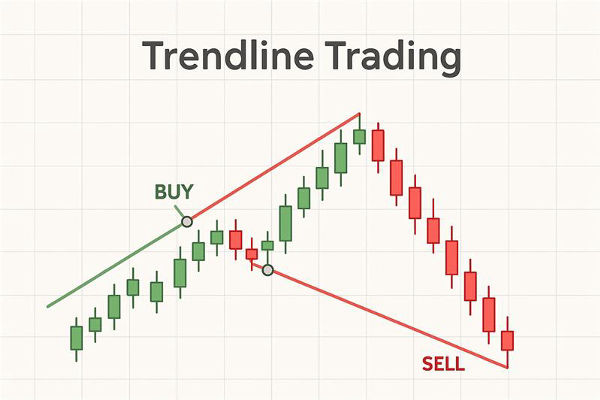Every successful trader starts with a solid foundation: a trading plan. Whether you're day trading, swing trading, or investing, a structured plan helps you set clear goals, identify your strategy, manage risk, and stay disciplined.
In this guide, we'll walk you through crafting a comprehensive trading plan step by step so you can trade with clarity, consistency, and confidence.
13-Step Guide to Creating a Winning Trading Plan

1. Define Your Trading Objectives
Begin by clarifying why you trade. Are you seeking a full-time income, additional salary, or simply growing capital over time? Set specific, measurable goals such as targeted annual returns (e.g. 10–15%), maximum monthly drawdown limits, and your trading horizon.
These objectives provide direction as measuring success is simpler when you can evaluate outcomes against your established targets.
2. Determine Your Risk Tolerance & Capital Allocation
Evaluate how much capital you're willing to risk per trade and overall. Numerous traders begin by risking only 1–2% of their account equity on each trade, maintaining an overall drawdown threshold of around 10–20% before taking a break.
This protects your account from emotionally driven losses and helps enforce discipline. Determine the amount of capital allocated for trading compared to a safety reserve.
3. Select the Markets and Timeframes to Trade
Choose instruments that align with your interests and access: forex pairs, stocks, commodities or index futures.
Next, choose a trading timeframe that suits your way of life: day trading (5‑minute charts), swing trading (such as 1‑hour or daily), or position trading (daily/weekly). Matching the market and timeframe ensures your strategy is focused and realistic.
4. Develop or Choose a Trading Strategy
Your strategy defines how and when you enter and exit trades. Popular approaches include trend-following, breakouts, mean reversion, price action, indicator-driven systems, or event-based trades.
For every trade setup, clearly outline the entry criteria (e.g. moving-average cross or breakout validation), exit criteria (profit objectives, trailing stops), and any parameters (e.g. trading solely during trending sessions or steering clear of news events).
A well-defined strategy eliminates ambiguity and helps you avoid chasing random signals.
5. Risk Management Rules

Every plan should have set rules for protecting capital. It includes:
Position sizing that aligns with your per-trade risk percentage.
A clear stop-loss placement methodology (e.g. below recent swing).
Risk‑reward ratio requirements—many plans demand at least 1:2 or 1:3.
Rules for limiting open trades—never overextend exposure.
Only after reaching preset drawdown limits does the plan mandate pausing and reviewing performance, preventing emotional breakouts.
6. Build Entry and Exit Guidelines
Define how you'll execute trades.
Enter only on signal confirmation after close (no guessing mid-candle), and use limit or market orders as appropriate.
Specify target-setting methods: either a multiple of your stop distance, a Fibonacci level, or a structural support/resistance zone.
Outline when and how you'll scale out or trail stops for profitable trades.
Detailing these procedures helps avoid impulse decisions during high emotions.
7. Create a Daily Routine and Trading Checklist
Good traders work off processes. A daily routine might include reviewing news events, tracking economic calendars, scanning market structure, and checking open positions.
Before entering a trade, run through a checklist to confirm that the trade aligns with strategy, risk settings, time-of-day filter, and that no major news is pending. Use a post‑session review: record what you did, how the market reacted, and what you learned.
8. Keep a Trading Journal
Recording every trade is essential for progress. Log:
Date, instrument, direction, entry price, stop-loss, target.
Profit or loss, reason for entry, any deviation.
Emotional and cognitive notes (e.g. felt nervous, overconfident).
After a week or a month, analyse your edge: win rate, average gain vs. loss, best-performing setups, recurring mistakes. A journal is not about judgment, as it's a feedback loop for more consistent improvement.
9. Develop Psychological Readiness

Even with a solid plan, emotions can derail execution. Fear and greed undermine discipline. Include mental preparation in your plan, such as strategies for staying calm under stress (like pausing after a loss), rules to avoid revenge trading, times to take breaks, and when to walk away.
Incorporating mindfulness, breathing techniques, or short cooldown breaks helps preserve consistency.
10. Backtest, Forward Test, and Refine
Before risking real money, backtest your chosen strategy on historical data, whether manually or with software. Then, forward-test in a demo environment or with micro‑sized positions.
Watch for strategy robustness across market conditions. Adjust parameters based on results while avoiding overfitting. Your plan should evolve through disciplined refinement, not reactive tinkering.
11. Monitor Performance and Review Monthly
At the end of each trading month, review key metrics:
Overall return vs. drawdown.
Win rate and average trade net result.
Strategy subsets: which setups worked, which did not.
Execution quality. Measured vs. expected slippage or latency.
Use this review to iterate: keep what works, discard what doesn't. Set improvement goals for next month (e.g., better stop discipline or lower emotional trades).
12. Maintain Flexibility for Market Changes
Market conditions shift from trending to sideways, from low to high volatility, from quiet to major news cycles.
Your strategy must encompass situations in which you halt trading (such as significant economic events, structural ambiguity), along with guidelines for re-entering when conditions become stable.
Having this built-in flexibility avoids reactive, undisciplined trading during chaos.
13. Scale Responsibility as You Grow
As your capital grows, your plan must evolve. Recalculate risk sizes, adapt strategy to handle larger position sizes, consider portfolio diversification across instruments, and revisit broker costs or operational scalability.
Continue to live by risk principles and never overallocate or chase returns beyond your plan's defined rules.
Conclusion
In conclusion, a well-constructed trading plan is more than paperwork; it's your roadmap for success. It removes emotion, brings discipline, and helps you track progress with clarity.
Whether you're just starting or evolving your edge, use the steps above to build a plan that fits your goals, margin, timeframe, and psychological makeup.
Disclaimer: This material is for general information purposes only and is not intended as (and should not be considered to be) financial, investment or other advice on which reliance should be placed. No opinion given in the material constitutes a recommendation by EBC or the author that any particular investment, security, transaction or investment strategy is suitable for any specific person.





























